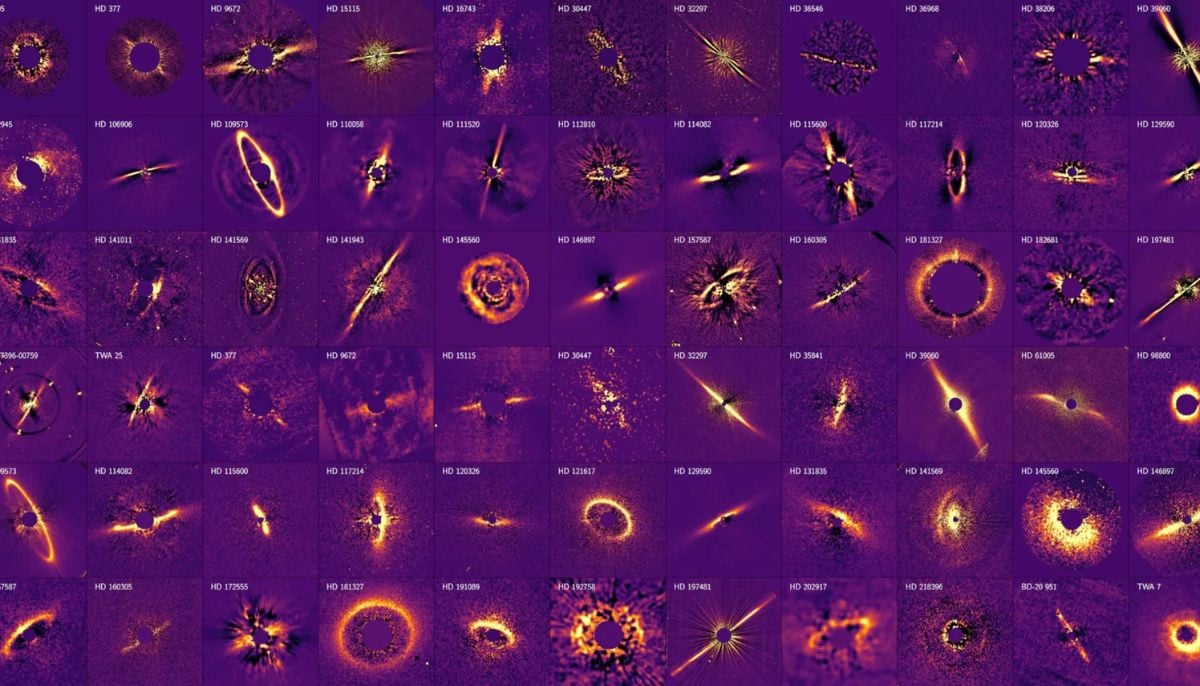After months of teasing a triple-display foldable phone, Samsung is gearing up to launch what it’s calling the Galaxy Z TriFold — because foldables with just one hinge are so last year.
The phone is slated to become available first in Korea…

After months of teasing a triple-display foldable phone, Samsung is gearing up to launch what it’s calling the Galaxy Z TriFold — because foldables with just one hinge are so last year.
The phone is slated to become available first in Korea…

Jodie Foster, Billie Perkins, and Robert De Niro perform a scene in Taxi Driver directed by Martin Scorsese in 1976 in New York, New York.
Michael Ochs Archives | Moviepix | Getty Images
In the dwindling days of the California gold rush, the wife of a local miner faced a problem.
Her husband’s denim work pants kept ripping, so her tailor, Jacob Davis, had the idea to add copper rivets to key points of strain, like the pocket corners and the base of the button fly, to keep them from tearing.
Davis’ “riveted pants” soon became a roaring success and, unbeknownst to him at the time, marked the official birth of the blue jean, a garment that would transform fashion and come to represent the United States around the globe.
“It really has democratized American fashion and it also is the greatest export that we have sent to the world, because people identify jeans specifically with American Western culture,” said Shawn Grain Carter, a fashion professor at the Fashion Institute of Technology in New York. “It doesn’t matter your economic or social class. It doesn’t matter what your views are in terms of the political spectrum. Everybody wears denim.”
Jacob Davis
Courtesy: Levi Strauss & Co.
These days, denim is a major sales driver for retailers big and small, as the global denim market reached $101 billion this year, up 28% from 2020, according to data from market research company Euromonitor International. Major apparel companies from American Eagle to Levi Strauss are in a race to corner that market, leaning on A-list celebrities like Sydney Sweeney and Beyonce to win over shoppers and drive sales in an unsteady economy.
But if it weren’t for Levi Strauss, founder of the eponymous blue jeans company, Davis’ invention may not have gone far beyond the railroad town where it was created in the early 1870s.
Soon after Davis created his riveted pants, called “waist overalls” or “overalls” at the time, they began selling like “hot cakes” and he needed a business partner to secure a patent, said Tracey Panek, Levi’s in-house historian. So he wrote to Strauss, a Bavarian-born immigrant who was running a successful wholesale business in San Francisco and had supplied Davis the denim he used to create his riveted pants.
“The secret of them Pents is the Rivits that I put in those Pockets and I found the demand so large that I cannot make them up fast enough,” Davis wrote Strauss in a letter, according to PBS.
Levi Strauss
Courtesy: Levi Strauss & Co.
Strauss, an “astute” businessman, recognized the opportunity and agreed to partner with Davis, said Panek.
“This would have been the first time that Levi was actually” manufacturing his own products, said Panek. “He was no longer just importing and selling other people’s goods. He was manufacturing himself and selling to retailers.”
On May 20, 1873, the two men secured a patent for the riveted pants and eventually opened a factory on Fremont Street, close to the modern-day Salesforce tower in San Francisco’s financial district.
They promised to offer workers the most durable jeans on the market and soon, business was booming.
Through Strauss’ connections as a wholesaler, the company’s riveted overalls soon spread across the U.S., becoming the garment of choice for working men everywhere: miners, cowboys, farmers – any role that required durable clothing.
Jeans were exclusively reserved for work settings at the time, but as emerging denim manufacturers vied for a similar customer base, they looked to expand their assortment to drive sales.
“Slowly and steadily into the 20th century, you start to see some of these manufacturers making variations,” said Sonya Abrego, a New York City-based fashion historian. “There was this one design called spring bottom pants that was kind of a more form fitted, a more dressed up, a slightly flared, maybe what the factory foreman would be wearing, right? As opposed to just the guy on the shop floor.”
In 1934, Levi created the first ever line of jeans for women. Around that time, denim started to become more popular in settings outside of work, primarily for activities like dude ranch vacations, camping and horseback riding.
“So they were kind of taking on a cowboy’s garment or a worker’s garment but wearing it in a … resort setting,” said Abrego.
Courtesy: Levi Strauss & Co.
Dude ranch vacations had become popular because there were finally highways connecting different parts of the country, and few were willing to venture to Europe during a war. Companies like Levi began releasing advertisements highlighting their denim as “dude ranch duds” and “authentic western riding wear” to capture shoppers looking for jeans to bring with them on vacation, according to archival advertisements from the time.
These cultural moments helped to expand denim beyond workers, but jeans didn’t become widespread casual attire until after World War II, when American fashion overall started to shift.
By the time World War II ended, the mighty American consumer was beginning to emerge. For years, Americans had been forced to ration common goods like rubber, sugar and meat while simultaneously being encouraged to save their money by buying war bonds and socking away spare cash.
When the country shifted from wartime to peacetime, Americans were ready to splurge and soon began spending big on new cars, appliances and clothes.
“With a little bit more money to spend, you start seeing a bigger push for leisure clothes and fun clothes and play clothes, clothes to wear to backyard barbecues,” said Abrego. “Clothes that we would consider today as just like casual style.”
Courtesy: Levi Strauss & Co.
Slowly and surely, it became more and more acceptable for both men and women to wear jeans outside of work settings. Then, denim manufacturers made a push to allow jeans in schools.
“They wanted to sell to as many people as they possibly could,” said Abrego. “The idea that jeans are good for school means that they’re good for every day.”
By the time the 1960s hit, denim manufacturers had expanded their products and were selling a wide variety of colors, fits and styles. It became a symbol of the hippie movement and a mainstay on Hollywood sets.
Soon, denim was everywhere, and the 1970s brought the iconic bell bottom pants and the first iteration of the “designer jean” — denim pants being produced by labels and brands whose designs had nothing to do with work wear or western wear, like Calvin Klein and Gloria Vanderbilt.
Since then, denim has remained a constant in global fashion. While silhouettes, washes and fits have changed over time, jeans never really go out of style, which is what makes them so enduring, said Abrego.
“This is a design from 1873 … do we see anything else from 1873 on the street? It’s kind of wild if you think about it that way,” said Abrego. “We can talk about all the details, all the changes in manufacturing and all the different fits and finishes but it’s a recognizable thing, it’s still a pair of jeans. For me as a historian, that continuity is so compelling because I can’t really name anything else that has stayed the same to this degree.”

We’ve slept off our collective turkey coma and returned to the review lab here at Engadget. Our team may also be in full CES prep mode, but we’ve got a few more devices to get off or our desks before 2025 is over. Catch up on all of the

Ruinous floods and landslides have killed more than 900 people on Indonesia’s island of Sumatra, the country’s disaster management agency said on Saturday, with fears that starvation could send the toll even higher.
A chain of tropical storms…

The Athletic has launched a Cricket WhatsApp Channel. Click here to join.
Australia’s supporting cast have joined the party, but these are Mitchell Starc’s Ashes.
The home side, inspired by their veteran left-armer, are closing in on victory…

Hugh Grant, the British star of films like Four Weddings and a Funeral, Bridget Jones’s Diary and Love, Actually was in Delhi on Saturday, when he told a crowd an interesting bit of family trivia.
According to the Hindustan Times, he said his…


The world has a few different ways of generating artificial waves. Some pools, like Endless Surf, PerfectSwell and Wavegarden, use pneumatic caissons or levers to contribute to the shape and power of the wave as it marches down the pool….

Procreate Dreams 2 is here! Available as a free update for existing users, or at the same price as the original app for newcomers, the new release adds some of the most-requested features to what was already our pick as the best animation…

Astronomers have created a groundbreaking discovery of images showing debris…